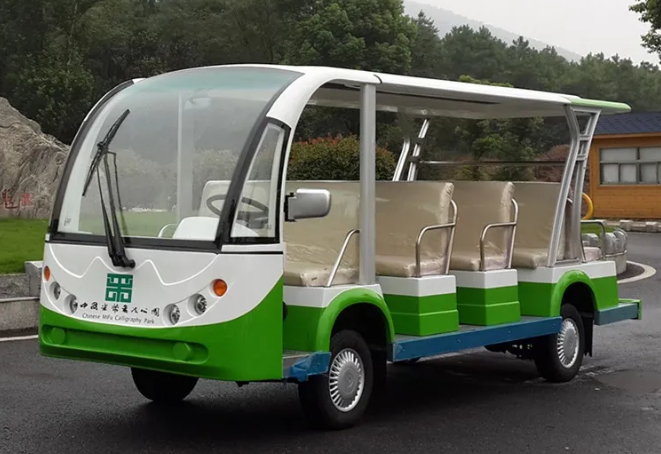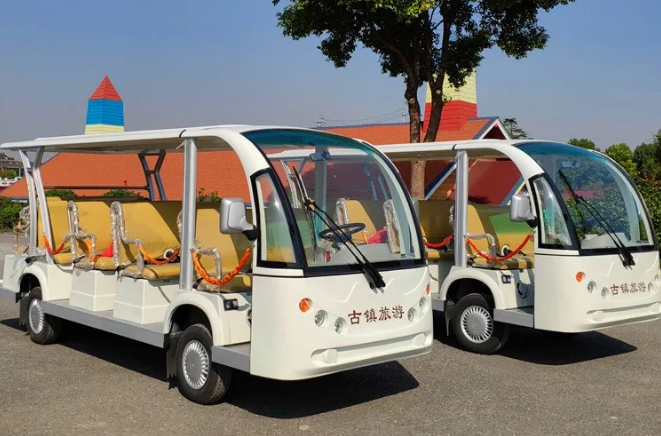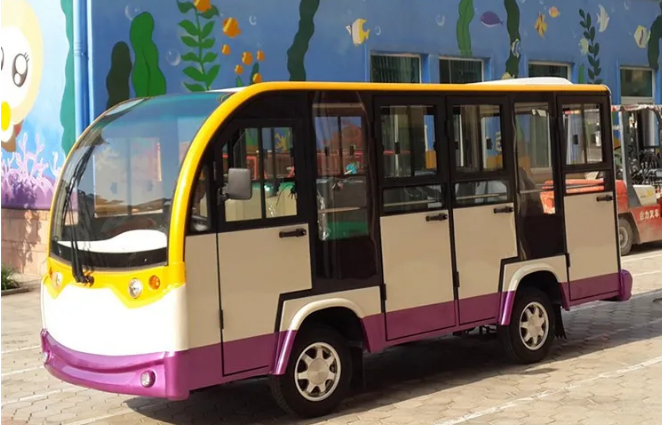How far can an electric sightseeing car travel on a single charge with Xinda Motor?
How far can an electric sightseeing car travel on a single charge? How long is the battery life of an electric patrol car?
Electric sightseeing car battery requirements
1. High energy density Any electric drive device hopes that the selected battery has large capacity, light weight and small size. This is because the battery that meets these conditions can make the electric drive device small in size, light in weight and have a long driving distance after charging. Lithium-ion batteries have high energy density and are the preferred power source for electric sightseeing vehicles.
2. High power density The starting and acceleration process of a vehicle is expected to be short, and the instantaneous output current of the battery must be large. Only batteries with high power density can meet this requirement, that is, the battery plates must be thin, the internal resistance must be small, and the high current discharge performance must be good.
Electric sightseeing car driving mode

The battery power of sightseeing cars can be obtained in various ways, such as coal, nuclear energy, hydropower, etc. Electric sightseeing cars can make full use of the surplus electricity during the low electricity consumption at night to charge, so that the power generation equipment can be fully utilized day and night, greatly improving its economic benefits, which is conducive to saving energy and reducing carbon dioxide emissions.
Motor classification 1. DC motor drive 2. AC motor drive: motor maintenance must first determine the brand of your electric sightseeing car. Generally, chargers are not universal. Chargers of different brands and models cannot be used interchangeably, which can easily cause overcharging or insufficient charging, and have a great impact on battery protection. It is recommended to use the original charger.
Features of electric sightseeing car
1. Beautiful appearance design; 2. Large space practicality; 3. Simple operation; 4. Energy saving and environmental protection. 6-seater electric sightseeing car 5. High safety performance. Uses 1. Golf course; electric sightseeing car 2. Park scenic area; 3. Amusement park; 4. Real estate; 5. Resort; 6. Airport; 7. Campus security and comprehensive management patrol; scenic area reception sightseeing car 9. Factory area; 10. Port terminal; 11. Reception of large exhibitions; 12. Field car for other purposes

Can an electric sightseeing car save electricity by running at the fastest speed all the time? How far can an electric sightseeing car travel? Why is it said that running at a constant speed is the most energy-saving? If you are interested, come and take a look with me.
Drive slowly and at a constant speed to save electricity. The long-term range of electric sightseeing vehicles is mainly determined by the battery capacity. The larger the capacity, the longer the range. Good driving habits are also conducive to extending the range. The faster the electric vehicle drives, the greater the wind resistance. Generally, there will be wind resistance at speeds exceeding 25km/h, and the wind resistance will be very obvious at speeds exceeding 40km/h. Large wind resistance will reduce the range.

The power supply provides electrical energy for the driving motor of the electric sightseeing car. The motor converts the electrical energy of the power supply into mechanical energy, and drives the wheels and working devices through the transmission device or directly. At present, the most widely used power supply for electric sightseeing cars is lead-acid batteries. However, with the development of electric sightseeing car technology, lead-acid batteries have been gradually replaced by other batteries due to their low specific energy, slow charging speed and short life. The power supplies under development mainly include sodium-sulfur batteries, nickel-cadmium batteries, lithium batteries, fuel cells, flywheel batteries, etc. The application of these new power sources has opened up broad prospects for the development of electric sightseeing cars.
The faster you drive, the more heat the battery, controller, motor, and tire of the electric vehicle will generate. In particular, the controller and motor will generate more heat, which is a waste of energy. Frequent braking and starting, and turning the handlebars all the way to the bottom when accelerating, will waste energy and reduce mileage. Driving at a low and constant speed can achieve the maximum mileage. When you are close to an intersection, release the handlebars and let the car slide and slow down naturally. This can save some energy compared to braking and slowing down directly when you arrive at the destination.



























 XINDA
XINDA